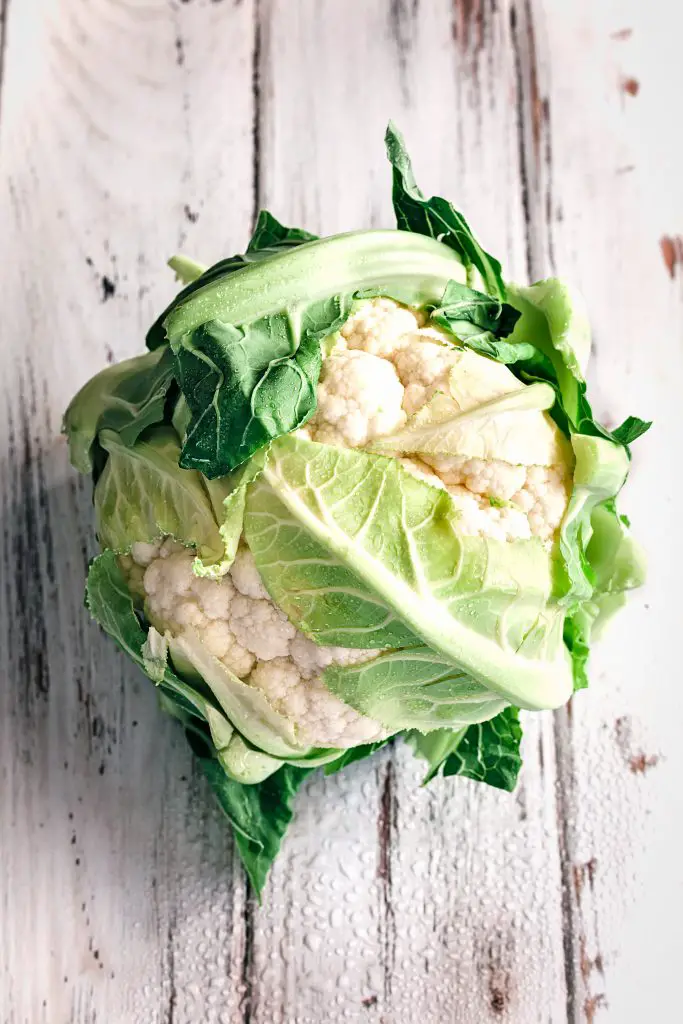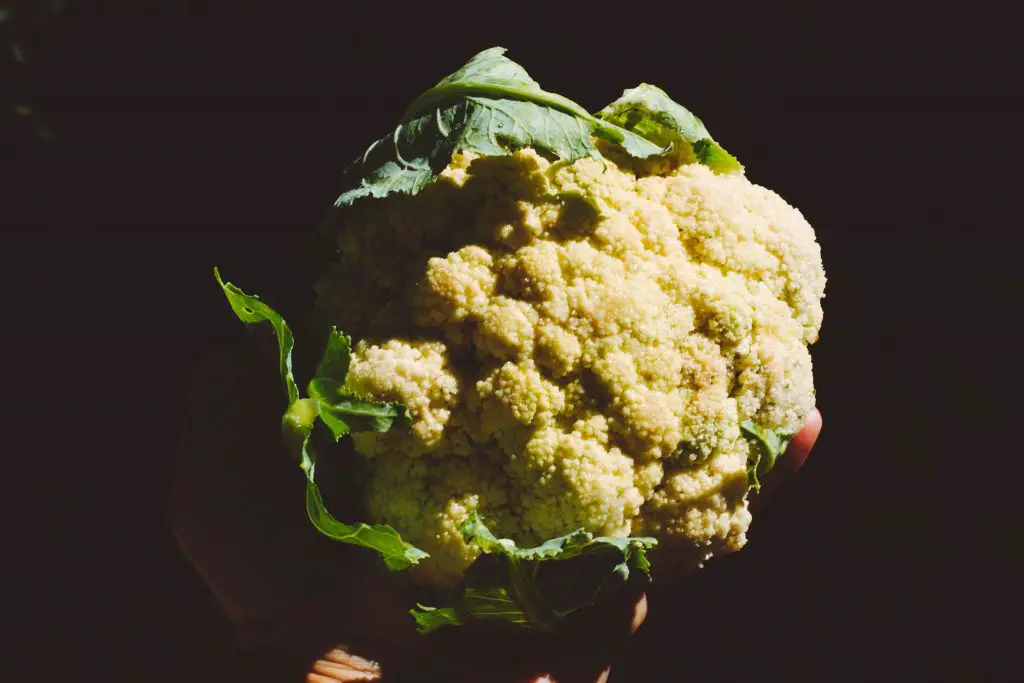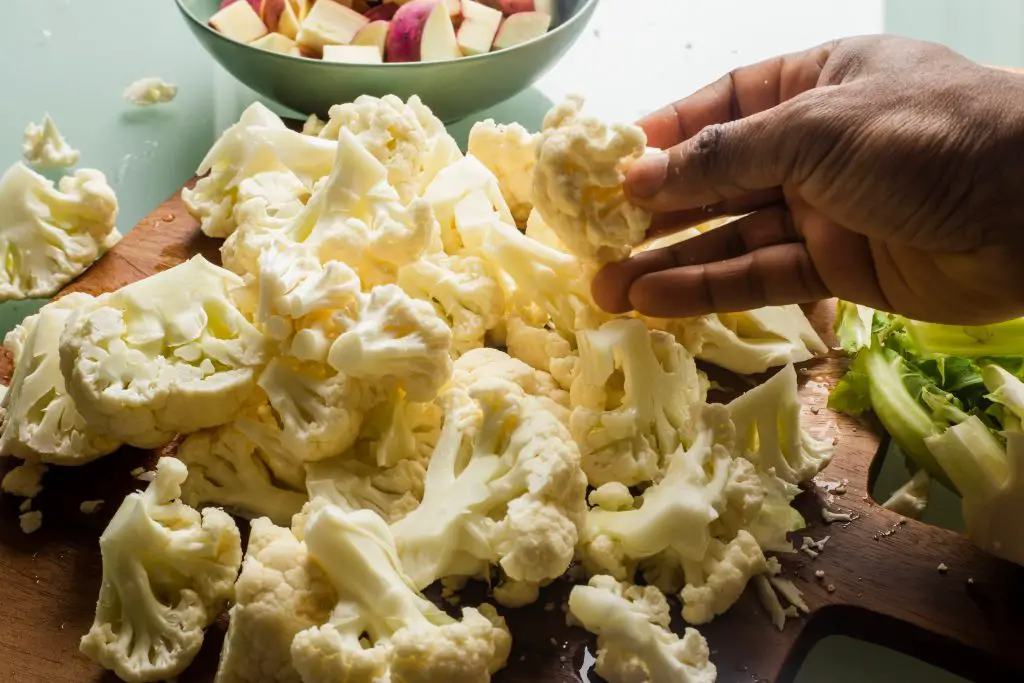Can Cauliflower Grow In Summer? Cauliflower is a traditional Winter vegetable that many seed packets state can be sown from Spring to Autumn. And while it is possible to germinate seeds and produce a crop during that time of year the quality of that crop will vary significantly depending on when the seeds are planted.
Cauliflower that matures through the peak of summer generally produces poor quality heads that are more stork than floret. Additionally, the heads separate quickly so you tend not to be able to produce the plump heads that you see in the grocery store.
Additionally, the heads have a greater tendency to yellow due to the more intense sunlight that occurs in summer. To read more on how to prevent yellowing of Cauliflowers click here.
As such I would generally not recommend that you attempt to grow Cauliflower at the height of Summer as you are likely to be disappointed. I would suggest that you are better off growing extra Cauliflower in the cooler part of the year and freezing it for use throughout the year. Information on how to freeze Cauliflower is provided at the end of the article.

However, if you really want to give Cauliflower a go during the hottest part of the year I would suggest growing it in a location that only gets morning Sun. This will protect it from the extreme heat of the afternoon sun.
In Which Season Cauliflower Is Grown?
Cauliflower is traditionally grown in Autumn, Winter, and Spring in most regions though growth in Winter is limited to regions with mild Winters. The seeds of cauliflower are best sown in late Winter undercover for a late Spring crop or mid to late summer to early Autumn for an Autumn or Winter crop.
If the sowing period is extended to late in Autumn the harvest of the Cauliflowers can be spread from late Autumn through to mid Spring. Sowing batches of seed in early to mid-Autumn will result in the plants only developing to a moderate size before winter hits. In milder regions, the plants can sit in the ground until the weather warms up. This will provide an early Spring harvest that will help fill the hungry gap.
How to Grow Cauliflower
The Cauliflower is a member of the Brassica family which includes Cabbage, Kohlrabi and Brussel Sprouts, with its nearest relative being Broccoli. It is believed to have originated around the Mediterranean with the modern forms appearing in Italy, around 500 years ago.
As mentioned earlier in the article Cauliflower can be grown in Autumn, Winter, and Spring provided the winter is not too cold. Typically, they can tolerate temperatures as low as -3°C (26°F). In these regions that get temperatures below this level, it is best to plant seeds in late winter and late summer. A range of different Cauliflower seeds is available from Seeds Now for those that live in the US and Canada or Thompson & Morgan for those living in the UK.

Cauliflower can be established by direct sowing into the soil, however, planting into seed trays is generally recommended for two main reasons. Planting in trays allows you to provide greater protection to the seedlings from pests such as slugs, which can decimate your seedlings. The second reason is that it minimizes the time the crop spends in the ground which provides the opportunity to grow something else in the garden while waiting for the seedlings to grow.
When planting in seedlings trays it is best to use a seed raising mix which can be purchased from the local garden center or online through Amazon. Seeds should be planted at a depth of 1 to 2 cm (0.5 to 1 inch) deep. When sowing in a modular tray it is advisable to plant 2 to 3 seedlings and then thin the modules later to leave the strongest seedling.
In terms of the number of seeds, you can plant it is best to plant around double the number of plants you think you will need. The reason for this is it will allow you to select only the highest quality seedlings to plant and additionally it will allow you to replace the seedlings if they are damaged when planted in the garden.
Typically, seedlings will be large enough to plant out into the garden after 4 to 6 weeks. When planting them out it is best to space them 40 to 50 cms (16-20 inches) apart. This is best done when the temperature exceeds 7°C (45°F) to ensure a reasonable rate of growth.
When the seedlings are planted out they will require some protection from pests. Sprinkling snail pellets around the seedlings is generally recommended, the pellets can be purchased through Amazon. For further protection, you can use cloches made from plastic milk cartons with the bottom cut out.
In terms of the location in the garden Cauliflowers prefer a sunny position but will also tolerate some shade. The soil should be rich, moist, and well-drained. Many books recommended that fertilizer be added regularly during the growing season however I have found this is not necessary if the soil preparation is adequate initially.

I generally use the no-dig method to prepare the soil as it is quick, easy and generally reduces the volume of work required in the garden. To read more about this method click here.
To produce pure white heads light needs to be excluded from the head of the Cauliflower. Exclusion of light can be achieved by tying the outer leaves over the top of the Cauliflower heads, using string or a rubber band.
However, to avoid the need to do this self blanching varieties can be grown. These blanching varieties naturally produce leaves that cover the heads. To find a list of self-blanching varieties click here.
When to Harvest Cauliflower
Cauliflowers should be harvested as soon as the head reaches a good size. This is because the quality of the head deteriorates becoming grainy and discolored if left too long in the garden. This process happens extremely quickly in warmer weather and is one of the reasons why Cauliflowers do not do well in the heat. If there are any signs of the curds, within the head separating, it should be harvested immediately.
How to Store Cauliflower
If you are planning to store Cauliflower for later it is best to harvest it in peak condition. When storing it short term it is ideally stored in a cool and moist place at a temperature between 0 to 4°C (32° to 40°F) and 90 percent relative humidity. As most refrigerators are cold but not moist the moisture can be increased by wrapping the Cauliflower in a damp cloth or paper towel. In these conditions, the Cauliflower will keep for 2 to 4 weeks.

For longer-term storage Cauliflowers may be frozen, however, blanching is required prior to freezing to stop enzyme activity within the Cauliflower from degrading it when frozen.
This process of blanching, done during the growing process, is different from the one required for freezing. Blanching for storage requires the vegetable to be placed in boiling water for a short period of time, to prevent the loss of flavor, color, and texture when frozen. If you are unfamiliar with how to blanch, the steps are provided below;
- Step 1: Wash the Cauliflower and cut the Cauliflower into smaller pieces.
- Step 2: Submerse the Cauliflower in a large pot of boiling water for 2 minutes.
- Step 3: Stop the cooking process by immediately plunging the Cauliflower into the ice water to cool, for around the same amount of time as the blanching, and then drain thoroughly.
- Step 4: Pack the Cauliflower into containers to freeze. Resealable plastic bags, or tupperware containers are ideal for this purpose. Ensure each bag or container is labelled with dates.
